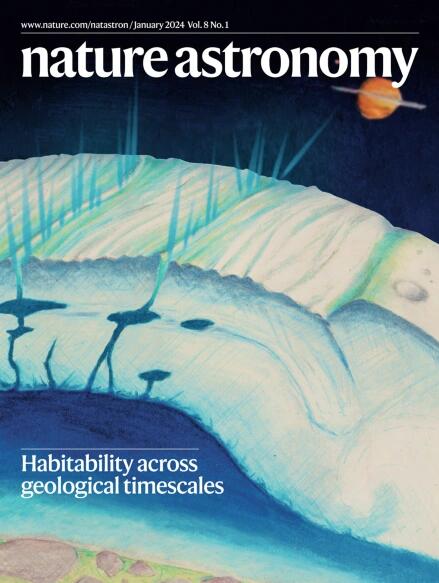In search of signs of life on Mars with China’s sample return mission Tianwen-3
IF 14.3
1区 物理与天体物理
Q1 ASTRONOMY & ASTROPHYSICS
引用次数: 0
Abstract
The aim of China’s Mars sample return mission, known as Tianwen-3, is to collect at least 500 g of samples from Mars and return them to Earth around 2031. Here we summarize the scientific objectives of Tianwen-3 and discuss the concept of the mission, from selecting the payload to curating the sample. The mission aims to provide insights into nine scientific themes centred around the main focus of the search for extant and past life on Mars. These nine themes, together with requirements based on technical capabilities, inform the selection of the payload. We present preliminary studies on a full-chain protocol and the strategy for the selection of the landing site and detection of potential biosignatures in the returned samples. We also propose, in strict accordance with the Committee on Space Research’s Planetary Protection Policy, an integrated plan for sample preservation and analysis. This plan involves the establishment of the Mars Sample Laboratory to conduct a comprehensive examination of the returned Mars samples and safeguard Earth against potential exobiological contamination. China is planning to launch its Tianwen-3 mission, with the purpose of bringing back a sample from Mars, by the end of the decade. This Perspective presents the scientific objectives and architecture of Tianwen-3, including a preliminary selection of landing sites and a description of the Mars Sample Laboratory that will curate the material on Earth.


为了在火星上寻找生命迹象,中国发射了“天文三号”样本返回任务
中国的火星样本返回任务被称为“天文三号”,其目标是从火星上收集至少500克样本,并在2031年左右返回地球。本文总结了天文三号的科学目标,并讨论了任务的概念,从有效载荷的选择到样品的管理。该任务旨在提供关于九个科学主题的见解,这些主题围绕着寻找火星上现存和过去生命的主要焦点。这九个主题,加上基于技术能力的需求,决定了有效负载的选择。我们提出了全链方案的初步研究,以及选择着陆点和检测返回样品中潜在生物特征的策略。我们还严格按照空间研究委员会的行星保护政策,提出一项样品保存和分析的综合计划。该计划包括建立火星样本实验室,对返回的火星样本进行全面检查,并保护地球免受潜在的外星生物污染。
本文章由计算机程序翻译,如有差异,请以英文原文为准。
求助全文
约1分钟内获得全文
求助全文
来源期刊

Nature Astronomy
Physics and Astronomy-Astronomy and Astrophysics
CiteScore
19.50
自引率
2.80%
发文量
252
期刊介绍:
Nature Astronomy, the oldest science, has played a significant role in the history of Nature. Throughout the years, pioneering discoveries such as the first quasar, exoplanet, and understanding of spiral nebulae have been reported in the journal. With the introduction of Nature Astronomy, the field now receives expanded coverage, welcoming research in astronomy, astrophysics, and planetary science. The primary objective is to encourage closer collaboration among researchers in these related areas.
Similar to other journals under the Nature brand, Nature Astronomy boasts a devoted team of professional editors, ensuring fairness and rigorous peer-review processes. The journal maintains high standards in copy-editing and production, ensuring timely publication and editorial independence.
In addition to original research, Nature Astronomy publishes a wide range of content, including Comments, Reviews, News and Views, Features, and Correspondence. This diverse collection covers various disciplines within astronomy and includes contributions from a diverse range of voices.
 求助内容:
求助内容: 应助结果提醒方式:
应助结果提醒方式:


